Propylene Glycol Market Size
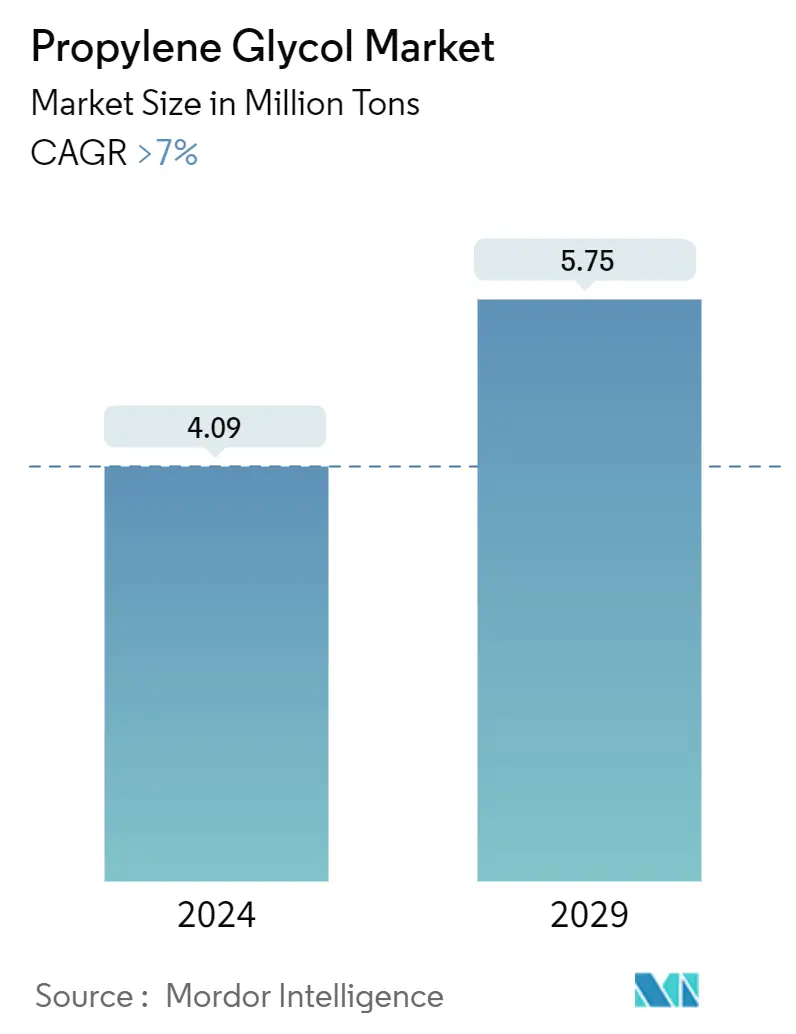
| Study Period | 2019 - 2029 |
| Market Volume (2024) | 4.09 Million tons |
| Market Volume (2029) | 5.75 Million tons |
| CAGR (2024 - 2029) | > 7.00 % |
| Fastest Growing Market | Asia-Pacific |
| Largest Market | Asia Pacific |
Major Players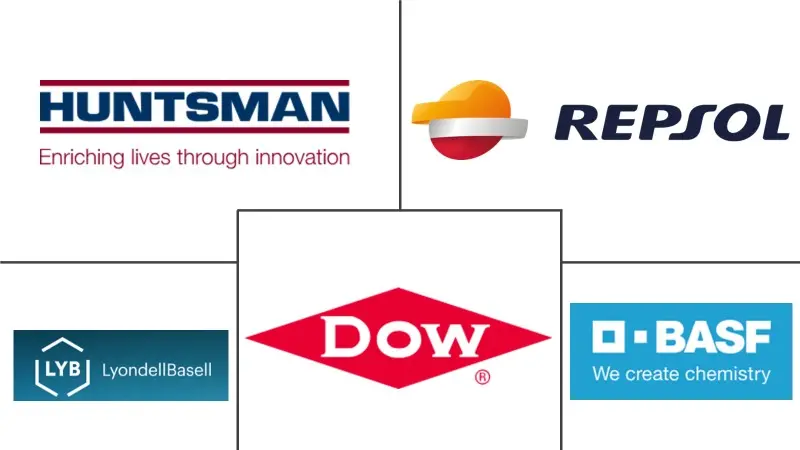
*Disclaimer: Major Players sorted in no particular order |
Need a report that reflects how COVID-19 has impacted this market and its growth?
Propylene Glycol Market Analysis
The Propylene Glycol Market size is estimated at 4.09 Million tons in 2024, and is expected to reach 5.75 Million tons by 2029, growing at a CAGR of greater than 7% during the forecast period (2024-2029).
The COVID-19 pandemic had negatively impacted the market due to nationwide lockdowns, strict social distancing measures, and disruption in supply chains, which negatively affected the transportation, building, and construction end-user industries, thereby affecting the market for propylene glycol. However, the market recovered well after the restrictions were lifted. The market recovered significantly, owing to the rise in consumption of propylene glycol transportation and pharmaceuticals end-user industries.
- The increasing demand from the food-processing and additives industry, the growing demand from the automotive industry, and the rising demand for solvents from various end-user industries are expected to drive the market for propylene glycol.
- The health issues created by the high consumption of propylene glycol are expected to hinder the market's growth.
- The development of industrial-scale direct synthesis methods for propylene glycol production is expected to create opportunities for the market during the forecast period.
- The Asia-Pacific region is expected to dominate the market due to rising demand for propylene glycol in transportation, building and construction, and pharmaceutical end-user industries.
Propylene Glycol Market Trends
Transportation End-User Industry to Dominate the Market
- Propylene glycol is widely used in the transportation sector. It is a viscous, colorless, odorless liquid. It is highly hygroscopic and soluble in alcohols, esters, water, amines, and ketones. It has limited miscibility with halogenated hydrocarbons and is not miscible with aliphatic hydrocarbons. It has a wide variety of applications in the transportation industry.
- Propylene glycol is used to produce fire-resistant brake and hydraulic fluids, coolants used in the transportation industry for applications like engine cooling, and more, as an initial for raw materials of paints, as a raw material for de-icing of planes, and as a heat transfer fluid for high-temperature applications. Propylene glycol is also used to prepare unsaturated polyester resins, with various roles in the transportation sector.
- The increase in the global production of automotive vehicles is expected to drive the market for propylene glycol. According to the Organisation Internationale des Constructeurs d'Automobiles" (OICA), global automotive vehicle production reached 85.02 million in 2022, compared to 80.2 million manufactured in 2021, at a growth rate of 6%. China, the United States, and India are the most prominent automotive vehicle markets globally.
- The United States is the second-largest automotive market in the world after China, which occupies a significant share of the global automotive vehicles market. According to OICA, in 2022, the United States automotive vehicle production reached 10.06 million compared to 9.15 million units manufactured in 2021, at a growth rate of 9%. This enhanced the growth of the automobile industry, which has stimulated the market demand for propylene glycol.
- According to the Boeing Commercial Outlook 2023-2042, the demand for new commercial jets by 2042 is expected to reach 42,595 units, valued at USD 8 trillion. The global fleet will nearly double to 48,600 jets by 2042, expanding by 3.5% annually. Airlines will replace about half of the global fleet with new, more fuel-efficient models.
- Moreover, North America is the hub for aeroplane production in the world. The United States is the largest market for airplanes in the region. Airbus and Boeing are the largest manufacturers of airplanes in the country. For instance, in 2022, Airbus delivered 661 commercial aircraft, registering 1,078 gross new orders by the end of the year. Similarly, Boeing Aeroplane OEM company received orders for 57 of the 737 Max 8 jets, with delivery expected through 2025.
- Hence, owing to the factors mentioned above, the transportation end-user industry is anticipated to drive the market for propylene glycol during the forecast period.
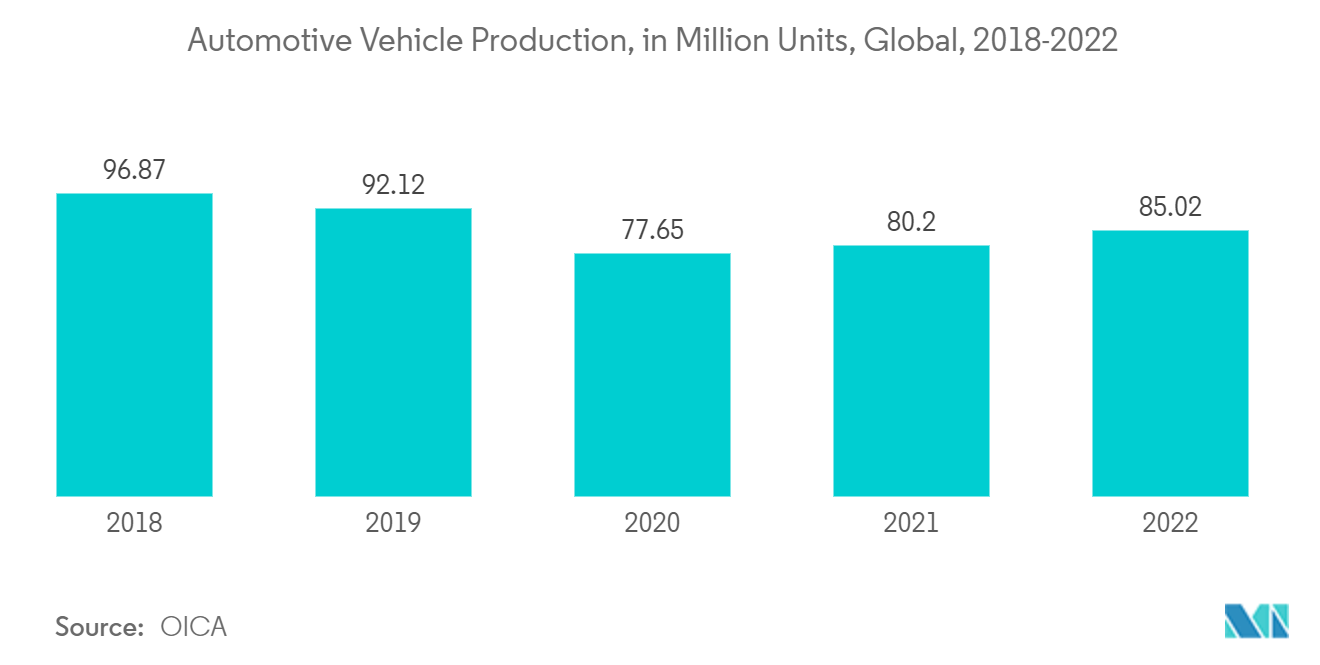
Asia-Pacific Region to Dominate the Market
- Asia-Pacific region is expected to dominate the market for propylene glycol with the increasing demand from automotive, construction, food, and beverage end-user industries. China, India, and Japan are the largest markets for propylene glycol in the region.
- Propylene glycol is used to prepare unsaturated polymer resins, which are used to make construction products like duct pipes and floor sheets, among others. In the paint industry, propylene glycol is used as a solvent in paints.
- China is the largest construction market in the world, encompassing 20% of all construction investments globally. China is expected to spend nearly USD 13 trillion on buildings and construction by 2030. This is anticipated to create a positive outlook for propylene glycol in the country.
- The Indian government has been actively boosting housing construction to provide houses to about 1.3 billion people. The country is likely to witness around USD 1.3 trillion of investment in housing over the next seven years, to witness the construction of 60 million new houses in the country. The availability of affordable housing in the country is expected to increase by around 70% by 2024.
- Furthermore, propylene glycol is also used in various edible items such as coffee-based drinks, liquid sweeteners, ice cream, whipped dairy products, and sodas. The increase in demand for food and beverage products is expected to create a market for propylene glycol in the region.
- China is the largest market for food and beverage in the region. According to the China National Light Industry Council, major food manufacturing companies with an annual turnover of over USD 2.8 million reported revenues of over USD 1.53 trillion in 2022. Compared to 2021, the total revenue registered a year-on-year growth of 5.6%, indicating strong growth in the food industry.
- Owing to the above-mentioned factors, the market for propylene glycol in the Asia-Pacific region is projected to grow significantly during the forecast period.
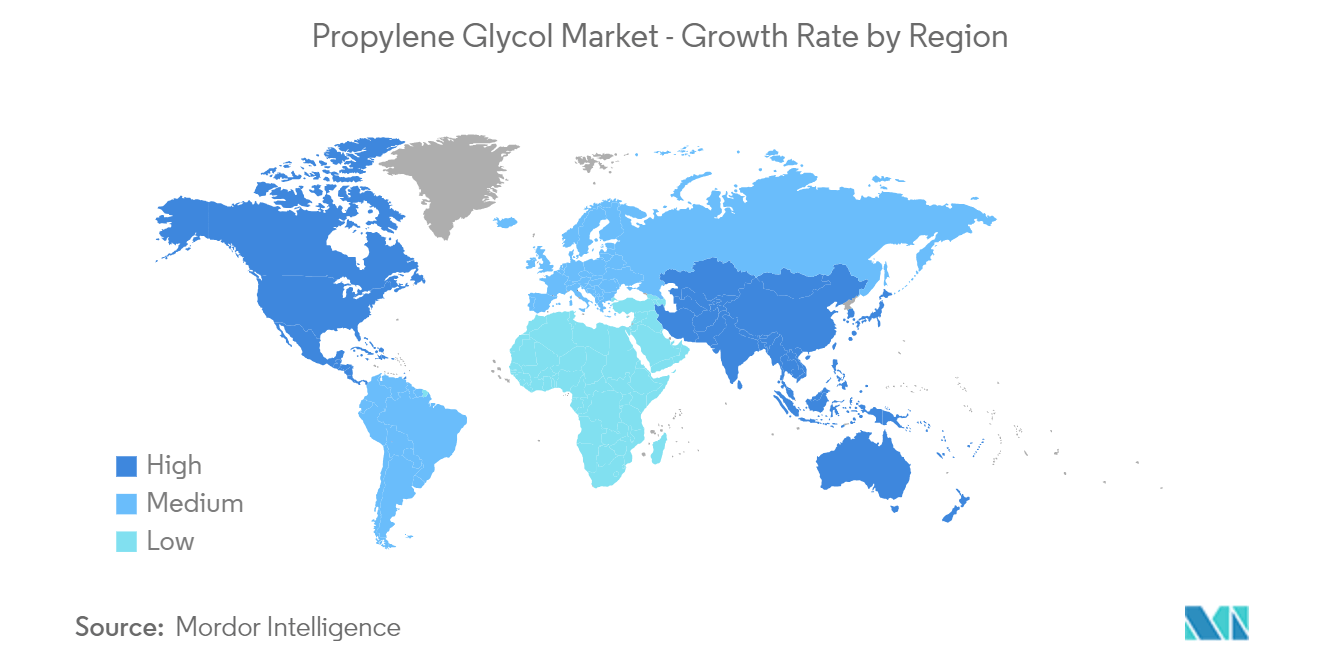
Propylene Glycol Industry Overview
The propylene glycol market is partially consolidated in nature. Some of the major players in the market include (not in any particular order) LyondellBasell Industries Holdings BV, BASF SE, Repsol, Dow, and Huntsman International LLC, among others.
Propylene Glycol Market Leaders
LyondellBasell Industries Holdings B.V.
BASF SE
Repsol
Dow
Huntsman International LLC
*Disclaimer: Major Players sorted in no particular order
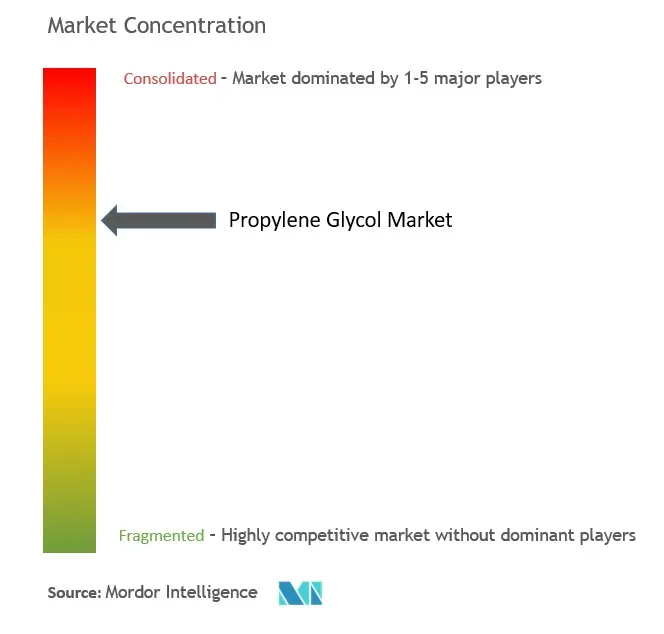
Propylene Glycol Market News
- September 2023: Dow Company launched lower carbon, bio-based, and circular propylene glycol solutions in Europe. These bio-based propylene glycol solutions are suitable for a broad range of applications across diverse industries like agricultural, pharmaceutical, cosmetics, textile, and food.
- May 2023: BASE technology enables more sustainable propylene glycol production at ORLEN Poludnie Plant. The ORLEN Poludnie, a significant contributor to the biofuels industry in Poland, has completed the inaugural year of its BioPG facility's operation. The plant is responsible for transforming glycerol, which is a by-product of biodiesel production, into eco-friendly propylene glycol, known as BioPG.
Propylene Glycol Market Report - Table of Contents
1. INTRODUCTION
1.1 Study Assumptions
1.2 Scope of the Study
2. RESEARCH METHODOLOGY
3. EXECUTIVE SUMMARY
4. MARKET DYNAMICS
4.1 Drivers
4.1.1 Demand for Propylene Glycol in the Food Processing and Additives Industry
4.1.2 The Increasing Demand from the Automotive Industry
4.1.3 Rising Demand for For Solvents From Various End-User Industries
4.2 Restraints
4.2.1 Health Issues Created by The High Consumption of Propylene Glycol
4.2.2 Other Restraints
4.3 Industry Value Chain Analysis
4.4 Porter's Five Forces Analysis
4.4.1 Bargaining Power of Suppliers
4.4.2 Bargaining Power of Buyers
4.4.3 Threat of New Entrants
4.4.4 Threat of Substitute Products and Services
4.4.5 Degree of Competition
5. MARKET SEGMENTATION (Market Size in Volume)
5.1 Grade
5.1.1 Industrial
5.1.2 Food and Beverage
5.1.3 Pharmaceutical
5.2 Application
5.2.1 Flavoring Agent
5.2.2 Antifreeze and Deicer Agent
5.2.3 Unsaturated Polyester Resins
5.2.4 Chemical Intermediates
5.2.5 Other Applications (Antioxidants, Household Care, etc.)
5.3 End-user Industry
5.3.1 Transportation
5.3.2 Building and Construction
5.3.3 Food and Beverages
5.3.4 Personal Care
5.3.5 Pharmaceuticals
5.3.6 Other End-user Industries (Electronics, Paints and Coatings, etc.)
5.4 Geography
5.4.1 Asia-Pacific
5.4.1.1 China
5.4.1.2 India
5.4.1.3 Japan
5.4.1.4 South Korea
5.4.1.5 Rest of Asia-Pacific
5.4.2 North America
5.4.2.1 United States
5.4.2.2 Canada
5.4.2.3 Mexico
5.4.3 Europe
5.4.3.1 Germany
5.4.3.2 United Kingdom
5.4.3.3 Italy
5.4.3.4 France
5.4.3.5 Rest of Europe
5.4.4 South America
5.4.4.1 Brazil
5.4.4.2 Argentina
5.4.4.3 Rest of South America
5.4.5 Middle East and Africa
5.4.5.1 Saudi Arabia
5.4.5.2 South Africa
5.4.5.3 Rest of Middle East and Africa
6. COMPETITIVE LANDSCAPE
6.1 Mergers and Acquisitions, Joint Ventures, Collaborations, and Agreements
6.2 Market Share (%)**/Ranking Analysis
6.3 Strategies Adopted by Leading Players
6.4 Company Profiles
6.4.1 ADEKA CORPORATION
6.4.2 ADM
6.4.3 AGC Chemicals
6.4.4 BASF SE
6.4.5 Chaoyang Chemicals, Inc.
6.4.6 Dow
6.4.7 Golden Dyechem
6.4.8 Huntsman International LLC
6.4.9 INEOS
6.4.10 Lonza
6.4.11 LyondellBasell Industries Holdings B.V.
6.4.12 Repsol
6.4.13 Shell plc
6.4.14 SKC Chemicals
6.4.15 Sumitomo Chemical Co., Ltd.
- *List Not Exhaustive
7. MARKET OPPORTUNITIES AND FUTURE TRENDS
7.1 Development of Industrial-scale Direct Synthesis Method for Propylene Glycol Production
7.2 Other Opportunities
Propylene Glycol Industry Segmentation
Propylene glycol is a viscous, colorless liquid classed as a diol. It is miscible with a broad range of solvents, including water, acetone, and chloroform, and thus finds application across a vast range of industries. Further, polypropylene glycol is a major component in the production of polymers.
The propylene glycol market is segmented by grade, application, end-user industry, and geography. By grade, the market is segmented into industrial, food and beverage, and pharmaceutical. By application, the market is segmented into flavoring agents, antifreeze and deicer agents, unsaturated polyester resins, chemical intermediates, and other applications (antioxidants, household care, etc.). By end-user industry, the market is segmented into transportation, building and construction, food and beverages, personal care, pharmaceuticals, and other end-user industries (electronics, paints and coatings, etc.). The report also covers the market sizes and forecasts for the propylene glycol market in 15 countries across the major region. For each segment, the market sizing and forecasts have been done based on volume (Tons).
| Grade | |
| Industrial | |
| Food and Beverage | |
| Pharmaceutical |
| Application | |
| Flavoring Agent | |
| Antifreeze and Deicer Agent | |
| Unsaturated Polyester Resins | |
| Chemical Intermediates | |
| Other Applications (Antioxidants, Household Care, etc.) |
| End-user Industry | |
| Transportation | |
| Building and Construction | |
| Food and Beverages | |
| Personal Care | |
| Pharmaceuticals | |
| Other End-user Industries (Electronics, Paints and Coatings, etc.) |
| Geography | |||||||
| |||||||
| |||||||
| |||||||
| |||||||
|
Propylene Glycol Market Research FAQs
How big is the Propylene Glycol Market?
The Propylene Glycol Market size is expected to reach 4.09 million tons in 2024 and grow at a CAGR of greater than 7% to reach 5.75 million tons by 2029.
What is the current Propylene Glycol Market size?
In 2024, the Propylene Glycol Market size is expected to reach 4.09 million tons.
Who are the key players in Propylene Glycol Market?
LyondellBasell Industries Holdings B.V., BASF SE, Repsol, Dow and Huntsman International LLC are the major companies operating in the Propylene Glycol Market.
Which is the fastest growing region in Propylene Glycol Market?
Asia-Pacific is estimated to grow at the highest CAGR over the forecast period (2024-2029).
Which region has the biggest share in Propylene Glycol Market?
In 2024, the Asia Pacific accounts for the largest market share in Propylene Glycol Market.
What years does this Propylene Glycol Market cover, and what was the market size in 2023?
In 2023, the Propylene Glycol Market size was estimated at 3.80 million tons. The report covers the Propylene Glycol Market historical market size for years: 2019, 2020, 2021, 2022 and 2023. The report also forecasts the Propylene Glycol Market size for years: 2024, 2025, 2026, 2027, 2028 and 2029.
Propylene Glycol Industry Report
Statistics for the 2024 Propylene Glycol market share, size and revenue growth rate, created by Mordor Intelligence™ Industry Reports. Propylene Glycol analysis includes a market forecast outlook for 2024 to 2029 and historical overview. Get a sample of this industry analysis as a free report PDF download.
